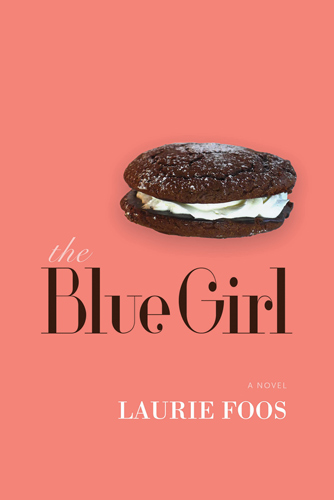The Blue Girl
A girl with blue skin is found drowning in a lake. A fifteen-year-old girl named Audrey saves her. Audrey’s mother, Irene, stands by. So do Irene’s friends, Magda and Libby. So do Audrey’s friends, Rebecca and Caroline. Audrey is the only one who acts; the rest of them watch. Audrey isn’t only the one who saved The Blue Girl, which is a remarkable thing for a fifteen year-old to do in itself, but she is the only one who attempted to save her. This singular moment—this moment of action and inaction—is the foundation for The Blue Girl by Laurie Foos. This event propels the story forward—how these six characters interpret this event, and thus in the process, how they come to understand themselves. A girl with blue skin is found drowning in a lake. A fifteen-year-old girl named Audrey saves her. Audrey’s mother, Irene, stands by. So do Irene’s friends, Magda and Libby. So do Audrey’s friends, Rebecca and Caroline. Audrey is the only one who acts; the rest of them watch. Audrey isn’t only the one who saved The Blue Girl, which is a remarkable thing for a fifteen year-old to do in itself, but she is the only one who attempted to save her. This singular moment—this moment of action and inaction—is the foundation for The Blue Girl by Laurie Foos. This event propels the story forward—how these six characters interpret this event, and thus in the process, how they come to understand themselves.
There’s something strangely beautiful about the simplicity of this story. For a story with six different narrators, there is plenty of potential for plot convolution, for stagnancy, or excessive wandering. But this mysterious, heartbreaking, and sometimes-chilling character called The Blue Girl is a unifying force that pulls these characters and their narratives together, forming a cohesive whole, making each narration tightly connected to the others, thanks to Foos’s remarkably sharp and precise prose.
These six characters are united by pain. They live different yet not-so-different lives. Irene rarely talks to her husband, Colin, who spends his time shooting a Nerf ball into a plastic hoop in silence. He lives in the same house as her, but she’s losing him. She’s also becoming distant from her daughter, Audrey. Magda has a disappointing son, Greg, who’s been held back in school and he drops the f-bomb the way a teenage girl says “like.” Much of the time, Magda doesn’t see her son as “Greg,” but rather, “this boy”: “I stand there looking at this boy, this son of mine, who pulls at his groin and fails biology.”
Libby, the last in this trio of protagonist women, is the mother of a disabled boy named Ethan and an almost-too-beautiful daughter named Rebecca, with looks even Libby envies.
Three mothers and their three daughters—perhaps that’s more accurate than saying “six female narrators” because there is a very firm dichotomy between these two trios. Secrets are paramount throughout The Blue Girl. The mothers’ regular disciplined baking of moon pies stuffed with their “secrets” for The Blue Girl is hidden from the daughters; the daughters’ obsession of The Blue Girl and their building skepticism of their mothers’ clandestine activities are also kept secret. Secrets wrapped up in secrets. Information is rarely divulged even among the mothers, as Irene so calmly narrates: “We never speak of the secrets, only the moon pies we have made, and even then, we are careful not to reveal too much.”
Foos’s level of control over her prose is masterful; these six different narrators’ recalling of often the same event never feels redundant—it is necessary information that is crucial in understanding the whole of the story. The pace of The Blue Girl zooms like a roller coaster, and when it’s mixed with Foos’s talent for both subtle and fantastical imagery, the novel really feels like an unpredictable and emotional thrill ride.
What makes The Blue Girl such a powerful novel is the lack of closure Foos provides us with. It isn’t a novel of answers; if you’re looking for a clear answer to what does it mean?, or who the hell is she?, then you’ll most likely be disappointed—we never really know who The Blue Girl is, or where she comes from, or how secrets can be stuffed into moon pies so neatly without ever leaking out. But The Blue Girl leaves you wondering, wondering like Irene and Audrey, like Libby and Rebecca, like Magda and Caroline, long after the final shattering page.





